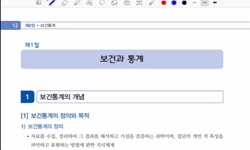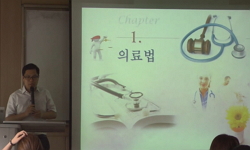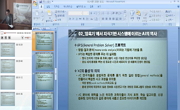The model of human occupation is an outgrowth of the occupational behavior tradition which emphasizes the original philosophical premises of the occupational therapy profession. The model employs general systems theory to explain the human system and ...
http://chineseinput.net/에서 pinyin(병음)방식으로 중국어를 변환할 수 있습니다.
변환된 중국어를 복사하여 사용하시면 됩니다.
- 中文 을 입력하시려면 zhongwen을 입력하시고 space를누르시면됩니다.
- 北京 을 입력하시려면 beijing을 입력하시고 space를 누르시면 됩니다.
https://www.riss.kr/link?id=A75174294
- 저자
- 발행기관
- 학술지명
- 권호사항
-
발행연도
2001
-
작성언어
Korean
- 주제어
-
등재정보
KCI등재
-
자료형태
학술저널
- 발행기관 URL
-
수록면
163-171(9쪽)
-
비고
학회 요청에 의해 무료로 제공
- 제공처
-
0
상세조회 -
0
다운로드
부가정보
다국어 초록 (Multilingual Abstract)
The model of human occupation is an outgrowth of the occupational behavior tradition which emphasizes the original philosophical premises of the occupational therapy profession. The model employs general systems theory to explain the human system and its interaction with the environment. The model conceptualizes the human as an open system that consists of three subsystems: volition, habituation, and mind-brain-body performance. The subsystems are hierachically ordered from the highest to lowest and each subsystem has its own structure and function. The highest subsystem is referred to as volition which is responsible for freely and consciously choosing occupational behavior. The middle subsystem is habituation which organizes occupational behavior into patterns or routines. The lowest subsystem is mind-brain-body performance which makes possible the skilled achievement of occupations. The human is also understood as a dynamical system performing in an environment composed of objects, tasks, social groups, and culture. Although the language of the model may be unfamiliar at first the basic theoretical principles of the model share the common concept with those of the oriental philosophy. The model is recognized as a holistic and comprehensive model which is one of the first to develop a strong focus on occupation in the occupational therapy profession.
목차 (Table of Contents)
- Ⅰ. 서 론
- Ⅱ. 본 론
- 1. 작업적 행동 전통
- 2. 체계이론(Systems Theory)
- 3. 개방체계 순환(Open System Cycle)
- Ⅰ. 서 론
- Ⅱ. 본 론
- 1. 작업적 행동 전통
- 2. 체계이론(Systems Theory)
- 3. 개방체계 순환(Open System Cycle)
- 4. 인간의 세 가지 하부구조(The Subsystems)
- 5. 환경(The Environment)
- 6. 기능장애를 보는 관점
- 7. 인간의 작업성 모델에 근거한 작업치료 접근 방법
- 8. 인간의 작업성 모델에 근거한 임상연구
- Ⅲ. 결 론
동일학술지(권/호) 다른 논문
-
- 대한작업치료학회
- 박수현
- 2001
- KCI등재
-
- 대한작업치료학회
- 유은영
- 2001
- KCI등재
-
- 대한작업치료학회
- 김미선
- 2001
- KCI등재
-
인지기능의 전이 훈련이 뇌경색과 뇌출혈환자의 인지기능과 운동기능회복에 미친 효과
- 대한작업치료학회
- 백지영
- 2001
- KCI등재





 eArticle
eArticle 코리아스칼라
코리아스칼라






